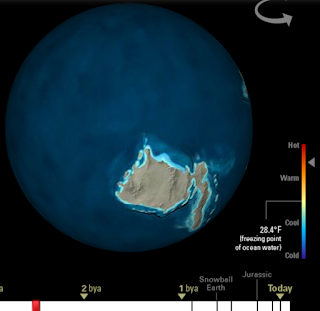Weather and climate intro:4/13/2021
This week my classmates and I were able to use virtual resources in order to further our understanding on earths physical changes throughout the decades. By using the Smithsonian website (https://www.smithsonianmag.com/science-nature/travel-through-deep-time-interactive-earth-180952886/) I was able to see and read about earths evolvement. Below I have summarized some of the information I learned today.
Haden earth about 4 billion years ago: At this point in time the earth was extremely hot and had no water. This environment was to harsh for any life form to survive. A large piece of earth was broken off by a collision that created the moon. Below is an example of what scientists believe earth looked like during this time.
Late Archean to Early Proterozoic about 2 billion years ago: At this point in time oceans and continents began to form, but there was no oxygen in the atmosphere. Due to the intense radiation from the sun it is unlikely that life was thriving on our planet. However it is possible that microbial were present in the oceans. Photosynthetic cyanobacteria also lived in the oceans and produced small amounts of oxygen which eventually leaked into the atmosphere. This is what the earth looked like about 2 billion years ago.
Rodinia 900 million years ago At this time Pangea was a supercontinent that included most of the continents we know today. There are several different predictions of how Pangea could have looked, but the important fact to know is that it began to break apart 800 million years ago. Through the breakup weathering soaked up large amounts of carbon dioxide from the atmosphere reducing the earths climate.
Snowball earth 650 million years ago During this time earth was experiencing an extreme ice age where glaciers dominated the surface. It is believed that the earth began to warm due to volcanic eruptions caused by shifting tectonic plates.




Comments
Post a Comment